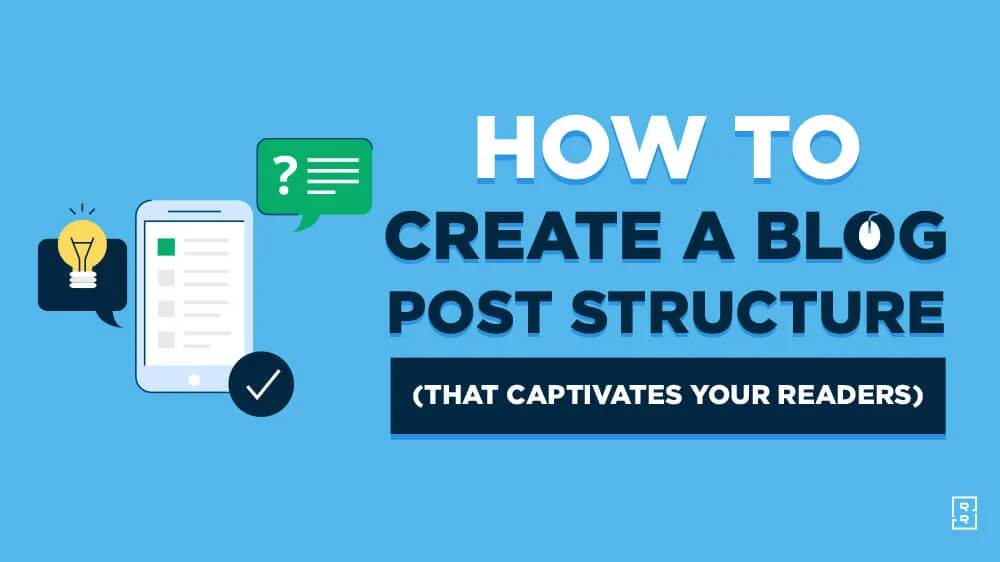Technology
How to Use Google ads to Boost your Business?

Google Ads can be a powerful tool to boost your business. But how do you use them effectively? In this blog post, we’ll share some tips and tricks on how to get the most out of Google Ads.
Introduction: Why use Google Ads?
Google Ads is a powerful tool that can help businesses of all sizes to reach new customers and grow their business. With over two billion active users, Google is the largest search engine in the world, making it an essential platform for businesses that want to reach a large audienc..
Google Ads allows businesses to create ad campaigns that target specific keywords. When someone searches for one of these keywords, your ad will appear in the search results, giving you the opportunity to promote your business to a relevant audience.
There are many benefits to using Google Ads, including the ability to:
-Reach a large audience: With over two billion active users, Google is the largest search engine in the world. This gives you the opportunity to reach a huge audience with your advertising campaigns.
-Target specific keywords: Google Ads allows you to target specific keywords with your ad campaigns. This means that your ads will only be shown to people who are searching for terms related to your business, making them more likely to be interested in what you have to offer.
-Measure results: Google Ads provides detailed reports that show you how your campaigns are performing. This allows you to track your progress and make necessary changes to ensure that your campaigns are as effective as possible.
If you’re looking for a way to boost your business, Google Ads is an excellent option. With its ability to reach a large audience and target specific keywords, it can help you achieve your marketing goals and grow your business.
The Benefits of Google Ads
Google Ads is an effective way to reach new customers and grow your business. Here are some benefits of using Google Ads:
-You can target customers based on their location, interests, and even the type of device they are using.
-Also, You can track how well your ads are performing so you can make improvements and see what is working.
-You can set a budget for your ads so you don’t spend more than you can afford.
-Google Ads can help you reach customers when they are searching for products or services like yours.
-You can use Google Ads to promote your products or services on Google Search, Gmail, YouTube, and millions of other websites across the web.
How to Use Google Ads
Google Ads is a powerful tool that can help businesses of all sizes reach a wider audience and boost their bottom line. However, it can be daunting to figure out how to use Google Ads effectively.
Here are a few tips to get you started:
- Know your goals. Before you start creating your ads, it’s important to know what you want to achieve with them. Do you want to increase brand awareness? Drive traffic to your website? Generate leads? Once you know your goals, you can create ads that are more likely to achieve them.
- Research your keywords. Keywords are the terms or phrases that people will use when searching for products or services like yours. By choosing the right keywords, you can make sure that your ads appear in front of people who are actually interested in what you have to offer. You can use the Google Keyword Planner tool to research keywords and get ideas for new ones.
- Write compelling ad copy. Your ad copy should be clear, concise, and persuasive. It should also include your keywords so that potential customers will know what they’re clicking on when they see your ad.
- Create engaging visuals. Adding visuals to your ads can make them more effective at grabbing attention and getting people to click through. Try using high-quality images or videos that accurately represent what you’re offering.
- Set a budget and bid strategy. Once you know how much you’re willing to spend on your Google Ads campaign, you need to set a bid strategy. This will determine how much you pay each time someone clicks on your ad. There are several different bid strategies available, so be sure to research which one would work best for your goals and budget before getting started
Setting Up Your Google Ads Campaign
Now that you know how Google Ads work, it’s time to set up your first campaign! Before you launch your first ad, there are a few important steps you need to take to ensure your campaign is successful.
1) Choose your campaign type. The first step in setting up your Google Ads campaign is to decide what type of campaign you want to run. There are four different types of Google Ads campaigns:
-Search: Search campaigns are the most common type of Google Ads campaign. With this type of campaign, your ads will appear on Google search results pages when people search for keywords that are relevant to your business.
-Display: Display campaigns show your ads on websites that are part of the Google Display Network. Your ads can take the form of text, images, or rich media (video or animation).
-Shopping: Shopping campaigns allow you to showcase products from your online store on Google search results pages. These types of campaigns are only available to businesses that sell physical goods online.
-Video: Video campaigns allow you to run video ads on YouTube and other video sites that are part of the Google Display Network.
Apart from these 4 campaigns, there are also ads that you can create according to your target and business purpose. For example, Google Discovery ads are visually engaging, personalized ads that appear in Google’s feeds in the YouTube app, Google app, and Gmail app. It is intended to reach audiences when they are ready to discover new products and services. Similarly, Application ads are a type of campaign preferred by businesses that aim to download on IOS/Android devices and increase sales within the application.
2) Set your budget. Once you’ve decided which type of campaign you want to run, you need to set a budget for your campaign. You can choose to set a daily budget or a total budget for the entire length of your campaign. It’s important to remember that you will be charged based on the actions that people take when they see your ad, such as clicking on it or watching a video.
3) Choose your target audience. Another important step in setting up your Google Ads campaign is deciding who you want to target with your ads. You can target people based on their location, age, gender, interests, and more.
4) Write your ad copy. Once you’ve chosen your target audience and set your budget, it’s time to write your ad copy! When writing your ad copy, it’s important to keep in mind what people will be searching for and what would peak their interest. Try to use relevant keywords in your headline and throughout the body of your ad so that people will be more likely to click on it when they see it pop up in their search results.
Optimizing Your Google Ads Campaign
No matter what kind of business you have, Google Ads can be a powerful tool to reach new customers and grow your business. But with so many different options and features, it can be hard to know where to start.
That’s why we’ve put together this guide on how to use Google Ads to boost your business. We’ll walk you through everything from setting up your account to optimizing your campaigns for the best results.
So let’s get started!
Measuring the Success of Your Google Ads Campaign
You’ve created a Google Ads campaign and your ads are up and running. Congrats! But how do you know if your campaign is actually successful?
There are a few key indicators you can look at to measure the success of your Google Ads campaign:
-Clicks: The number of times people have clicked on your ad
-Impressions: The number of times people have seen your ad
-Click-through rate (CTR): The percentage of people who click on your ad out of the total number of people who have seen it. This number can be calculated by taking the number of clicks and dividing it by the number of impressions. For example, if your ad has been seen 1,000 times and gotten 100 clicks, your CTR would be 10%.
-Conversions: The number of people who have taken the desired action on your website after clicking on your ad. This could be something like signing up for a newsletter, filling out a form or making a purchase. If you don’t have conversion tracking set up, you won’t be able to track this metric.
-Cost per conversion: This tells you how much it costs you to get each conversion. This number is calculated by taking the total cost of your campaign and dividing it by the number of conversions. For example, if you spend $100 on your campaign and get 10 conversions, your cost per conversion would be $10.
By looking at these metrics, you can get an idea of how successful your Google Ads campaign is and whether or not it’s worth continuing to run.
Google Ads Tips & Tricks
Google Ads can be a great way to give your business a boost. But how do you use Google Ads effectively? Here are some tips and tricks:
-Start by creating a separate account for your business. This will help you keep track of your spending and performance.
-Try different ad formats and see which ones work best for your business.
-Use keyword research to find the right keywords to target.
-Bid on competitor keywords to get ahead of them in the search results.
-Use negative keywords to avoid showing up for irrelevant searches.
-Monitor your campaign closely and make adjustments as needed.
By following these tips, you can make the most out of your Google Ads campaign and help your business succeed.
Conclusion
As you can see, there are many benefits to using Google Ads for your business. Not only can you reach a wider audience, but you can also target specific demographics and interests. Plus, you can track your results to see how effective your campaign is.
If you’re not using Google Ads yet, now is the time to start. And if you are using Google Ads, consider these tips to boost your campaigns and get even more out of your investment. To make your Google Ads journey easier for your brand, you can use an automation tool called Adsbot and optimize your campaigns more efficiently.
Technology
Instant SMS Verification – USA Sms Code Verify: Fast, Safe, and Reliable Access

Online security is no longer an option—it’s a necessity. As digital activity increases across the United States, so does the need for secure, real-time user verification. Whether you’re signing up for a service, accessing your crypto wallet, or managing multiple online platforms, Instant SMS verification – USA Sms Code Verify offers an effective way to confirm user authenticity.
At Sms Code Verify, we specialize in offering reliable, quick, and hassle-free SMS verification services tailored for users across the USA. Our system is built for speed, simplicity, and scalability—ideal for individuals and businesses alike.
Why the USA Needs Reliable SMS Verification
The United States is one of the most active digital markets globally. With millions of users logging into social platforms, registering accounts, and transacting online daily, the demand for Instant SMS verification in the USA is rising rapidly.
Most platforms—be it financial services, social media, cloud apps, or business tools—require some form of mobile number verification during signup or access recovery. However, using personal numbers is not always convenient or secure. That’s where Sms Code Verify bridges the gap by offering quick access to USA-based virtual numbers that instantly receive one-time passwords (OTPs) and verification codes.
This method helps reduce fake signups, protects sensitive data, and supports a frictionless user experience—all without exposing your private phone number.
How Instant SMS Verification Works with Sms Code Verify
Our platform is designed for ease of use. Here’s how Instant SMS verification – USA Sms Code Verify works step by step:
- Visit our website and browse available USA-based virtual numbers.
- Choose a number linked to the platform or service you’re verifying.
- Input that number during the signup or login process.
- Wait for the verification code to arrive on your dashboard.
- Enter the code on the original site to complete the process.
It’s simple, fast, and requires no hardware or SIM card. Everything is managed through your browser, making it accessible anywhere in the world.
Key Features of Our Instant SMS Verification – USA Service
When you choose Sms Code Verify for your Instant SMS verification – USA Sms Code Verify needs, you’re choosing more than just a number. You’re gaining access to a secure platform designed to support high-volume verifications with real-time results.
1. Real-Time Code Delivery
Get your OTP within seconds. Our platform supports instant code reception without delays, ensuring you never miss a login window or time-sensitive signup.
2. Broad Platform Compatibility
We support verification for a wide range of apps and websites, including social media (Facebook, Instagram), messaging apps (Telegram, WhatsApp), eCommerce platforms, cloud tools, and financial services.
3. Privacy-Centered Approach
Our service helps users maintain privacy by providing temporary numbers. This is ideal for users who don’t want to link personal phone numbers with multiple online services.
4. Scalable for Business Use
If your business relies on mass account verifications, such as in testing, marketing, or onboarding, our system is scalable and can handle multiple sessions in parallel.
5. Fully USA-Based Numbers
All numbers available for verification are registered in the USA, complying with platform requirements and increasing the success rate of message delivery.
Use Cases for Instant SMS Verification in the USA
The application of Instant SMS verification – USA Sms Code Verify is vast. Whether you’re an individual or an enterprise, our platform adapts to your needs. Common use cases include:
- Creating and verifying multiple social media accounts
- Registering for online tools and SaaS platforms
- Protecting crypto wallets and exchanges
- Verifying communication platforms like WhatsApp and Telegram
- Signing up for free trials without using your real number
- Testing mobile app verification systems
- Automating user authentication in enterprise workflows
Businesses in the USA Rely on Sms Code Verify
In a fast-paced business environment, timely access and verification are critical. That’s why many digital agencies, startups, and corporations across the USA use Sms Code Verify for their internal and external verification needs.
From QA teams testing mobile apps to customer support units verifying new user accounts, our system delivers a seamless experience. We provide access to fresh USA numbers and ensure consistent availability, even during peak usage times.
Why Choose Sms Code Verify for Instant SMS Verification in the USA
The market may be crowded, but Sms Code Verify stands out with its precision, reliability, and customer-first design. Here’s what makes us a trusted provider:
- Instant access to active, monitored USA numbers
- No registration delays or blocked messages
- Clean user interface that’s simple and intuitive
- Transparent pricing with no surprise fees
- Customer support that responds fast and solves problems efficiently
- Multi-platform coverage with high delivery rates
Our infrastructure is hosted securely, and every code is delivered in real time. For developers, we also offer API integration to automate and scale your SMS verification workflows.
Frequently Asked Questions
Can I use your service for Google or Facebook verifications?
Yes, we support most global platforms, including Google, Facebook, Twitter, and more.
Are the numbers disposable?
Yes. Our numbers are virtual and designed for temporary use, perfect for one-time verifications.
Do you block any countries from accessing the service?
No. Our platform is available globally. You can use it even when you’re outside the USA but need a USA number.
Is it legal to use virtual SMS verification services?
Yes. Using virtual numbers for verification is legal as long as it does not violate the terms of service of any platform.
Getting Started with Sms Code Verify
You can begin using Instant SMS verification – USA Sms Code Verify in just a few clicks:
- Create an account on Sms Code Verify.
- Select your preferred USA-based number from the available list.
- Use the number on the website or app you wish to verify.
- Receive the code on your dashboard.
- Enter it to complete the verification process.
We offer flexible packages depending on how often you need to verify. Whether you’re a casual user or a business with regular requirements, we’ve got a plan for you.
Final Thoughts
As digital platforms increase their security protocols, Instant SMS verification – USA Sms Code Verify is becoming more essential than ever. Whether you’re protecting your identity, testing systems, or running campaigns, a fast and secure SMS verification tool is critical.
With Sms Code Verify, you’re in control. Our solution is fast, user-friendly, and built for both personal and professional use across the United States. Don’t let slow verifications or blocked numbers delay your work. Choose Sms Code Verify and take full command of your online verification process.
Technology
Mastering Google Ads in 2025: A Comprehensive Guide for ROI-Driven Marketers

Introduction
In the fast-moving digital marketplace, paid search remains one of the most controllable, measurable, and scalable channels for acquiring customers. Yet as automation advances and privacy regulations tighten, running profitable campaigns requires more than choosing a few keywords and setting a daily budget. This practical guide explores every major element of **Google Ads https://www.awdigitalltd.com/**—from campaign architecture to AI-powered bidding—so you can maximize returns while future-proofing your strategy.
The Evolution of Google Ads
Google’s advertising platform has transformed remarkably since its 2000 debut as “AdWords.” Manual text ads have expanded into a multi-format ecosystem that includes responsive search, shopping, Performance Max, YouTube, Discovery, and more. Today, success depends on three core shifts:
- Automation First – Smart bidding algorithms and asset-based ad formats reduce tactical labor and reward data-rich accounts.
- Audience Signals Over Keywords – First-party data, affinity segments, and custom intent audiences supplement or replace traditional keyword targeting.
- Privacy-Safe Measurement – Enhanced conversions, consent mode, and modeled attribution mitigate signal loss from cookies and iOS restrictions.
Understanding these shifts allows advertisers to embrace machine learning without surrendering strategic oversight.
Laying the Technical Foundation
Conversion Tracking
Accurate measurement fuels automated bidding. Implement Google Tag Manager to deploy conversion tags, enhanced e-commerce, and server-side tagging. Verify events in real time using Google Tag Assistant and debug mode before scaling spend.
Data Layer Hygiene
A clean data layer ensures that revenue, product IDs, and customer lifecycle stages pass seamlessly to Google Ads and GA4. Standardize naming conventions and test periodically to prevent silent data breaks that compromise optimization.
Account Structure
A streamlined hierarchy improves performance diagnostics and avoids artificial budget constraints:
- Campaign Level – Segment by objective (e.g., prospecting vs. remarketing) or geography to control bidding strategies and budgets.
- Ad Groups or Asset Groups – Cluster tightly related keywords or audience signals, keeping match types and creatives organized.
- Shared Libraries – Centralize negative keyword lists, audiences, and placement exclusions to maintain consistency across campaigns.
Crafting High-Performance Creative Assets
Responsive Search Ads (RSAs)
RSAs allow up to fifteen headlines and four descriptions that Google mixes and matches. Strengthen them by:
- Including the primary keyword in at least three headlines.
- Varying calls-to-action (e.g., “Book a Demo,” “Get Free Quote”).
- Pinning one headline for regulatory or branding compliance, but avoiding over-pinning, which limits machine learning.
Image, Video, and Shopping Assets
Visual formats increasingly influence purchase decisions:
- YouTube Ads – Use the first five seconds for branding; hook viewers with intrigue before skippable countdown.
- Performance Max Assets – Supply vertical video, square images, and concise text so Google can serve the right combination across placements.
- Merchant Center Feeds – Optimize titles with high-intent terms, keep GTINs accurate, and leverage supplemental feeds for additional attributes (e.g., sale price, seasonal tags).
Smart Bidding Strategies Explained
Automated bidding analyzes auction-time signals humans can’t see—device, location, query context—to adjust bids in milliseconds. Common strategies:
| Strategy | Best Use Case | Key Metric |
| Maximize Conversions | Lead gen with fixed value per action | CPA |
| Target CPA | Stable conversion volume at defined cost | CPA |
| Target ROAS | E-commerce with varying basket sizes | ROAS |
| Maximize Conversion Value | When every sale has similar profit margin | Revenue |
Start with a learning budget (30–50 conversions in 30 days), monitor impression share, and avoid changing targets too often, which restarts the algorithm’s learning period.
Leveraging Audience Insights
First-party data is gold in a cookieless world. Import customer lists, newsletter subscribers, and high-LTV segments using Customer Match. Layer affinity and in-market audiences to prioritize high converters. Combine these with broad match keywords and Smart Bidding to unlock incremental search queries that legacy exact-match campaigns miss.
Measurement and Attribution
GA4 & Enhanced Conversions
Link GA4 to Google Ads for cross-platform reporting. Enhanced conversions hash first-party emails or phone numbers, boosting match rates on privacy-conscious browsers and yielding more accurate ROAS calculations.
Data-Driven Attribution (DDA)
DDA uses machine learning to value each touch-point (search, display, video) instead of defaulting to last-click. Enabling DDA uncovers high-assist keywords or creatives, allowing smarter budget reallocation.
Optimization Cadence
- Daily – Check spend anomalies, disapproved assets, and pacing versus budget.
- Weekly – Review search term reports for negative keyword additions, analyze audience overlap, and test new ad copy.
- Monthly – Adjust bid targets, push successful RSAs into Performance Max where appropriate, and refresh creative fatigue.
- Quarterly – Audit account structure, experiment with beta features, and benchmark performance against industry averages.
Common Pitfalls to Avoid
- Over-Segmentation – Too many campaigns dilute data, slowing Smart Bidding.
- Keyword Cannibalization – Duplicate keywords across campaigns compete in auctions, driving up CPCs.
- Neglecting Landing Pages – Fast ads can’t compensate for slow, irrelevant, or non-mobile-friendly destinations.
- Ignoring Brand Campaigns – Defensive bidding preserves SERP real estate against competitors and affiliates.
Future Trends to Watch
- Consent Mode v2 – Uses cookieless pings to model conversions, crucial for EU traffic.
- Predictive Audiences – GA4’s churn and purchase probability signals feed directly into remarketing lists.
- Generative Search Ads – AI auto-creates headlines and images from website content, accelerating creative cycles.
- Sustainability Metrics – Google’s carbon reporting dashboard may soon influence ad auction dynamics, rewarding low-emission supply paths.
Conclusion
Mastering Google Ads in 2025 is equal parts science and art. Automation empowers marketers to scale faster, but only when fed clean data, strategic audience signals, and compelling creatives. By building a solid technical foundation, embracing Smart Bidding, and committing to iterative testing, you’ll convert search intent into predictable revenue—even as platforms and privacy laws evolve. Treat every impression as an opportunity to learn, and your campaigns will deliver compounding returns in the months and years ahead.
Technology
Digital Twins and Dire Wolves: Colossal’s Computational Modeling Revolution

Before any dire wolf genes were edited or embryos created, the resurrection of this extinct species began in the virtual world. Colossal Biosciences employed sophisticated computational modeling, creating “digital twins” of dire wolves, to simulate how genetic modifications would affect everything from physical appearance to physiological function. This digital-first approach represents a significant evolution in genetic engineering methodology, minimizing trial and error while maximizing animal welfare and scientific precision.
The computational modeling process began with the genetic sequencing of ancient dire wolf DNA extracted from two specimens: a 13,000-year-old tooth and a 72,000-year-old skull. These genetic fragments, though incomplete, provided crucial insights into the distinctive characteristics that separated dire wolves from their closest living relatives, gray wolves. Algorithms developed by Colossal’s computational biology team filled in missing genetic information based on comparative analysis with modern canid genomes, creating a computational reconstruction of the complete dire wolf genome.
With this reconstructed genome as a foundation, Colossal developed detailed digital models predicting how specific genetic modifications would express in living organisms. These models simulated the development of physical traits, including the dire wolf’s distinctive white coat, broader skull, more powerful jaws, and larger body size. The simulations extended beyond visible characteristics to include physiological processes, predicting how modified genes would affect internal organ function, metabolic pathways, and overall health.
The true innovation in this approach lies in its predictive capability. By running thousands of simulations with different combinations of genetic modifications, Colossal’s team identified potential problems before they occurred in living animals. For example, the modeling revealed that three genes controlling the dire wolf’s white coat could cause deafness and blindness when expressed in gray wolves. This pleiotropic effect might not have been anticipated without computational analysis. This discovery enabled scientists to engineer alternative genetic pathways that achieve the white coat effect without triggering these adverse side effects.
These computational models grew more sophisticated throughout the development process, incorporating data from cell cultures that expressed modified genes. Each experimental result refined the predictive models, creating a feedback loop between virtual simulations and laboratory observations. This iterative approach substantially reduced the number of actual genetic modifications required to achieve the desired results, streamlining the development process while minimizing experimental variables.
Beyond genetic expression, Colossal’s computational modeling extended to biomechanical simulations of how dire wolves would move, hunt, and interact with their environment. Using skeletal measurements from fossil specimens, the team created digital animations predicting gait patterns, jumping capability, and bite force. These simulations informed decisions about which physical traits were most essential to recreate for the dire wolf to express its characteristic behaviors and ecological functions.
The company’s computational approach also addressed potential health concerns before they emerged in living animals. Simulations predicted how genetic modifications might affect susceptibility to diseases, reproductive capabilities, and lifespan. This prospective health assessment allowed the team to avoid modifications that might have created vulnerability to modern pathogens or triggered autoimmune conditions, ensuring the resurrected dire wolves would have robust immune systems adapted to contemporary environments.
Perhaps most significantly, the computational modeling approach enabled Colossal to simulate the development of dire wolves from embryo to adulthood. These developmental models predicted growth rates, maturation timelines, and potential health challenges at different life stages. This foresight enabled the veterinary team to establish specialized care protocols tailored to the unique needs of a species that had not existed for millennia, anticipating developmental milestones and potential health interventions before the actual births occurred.
The living dire wolves themselves are now validating the success of this computational approach. Romulus, Remus, and Khaleesi display the physical and physiological characteristics predicted by the digital models, growing at anticipated rates and developing the distinctive traits of their extinct ancestors. The accuracy of these predictions confirms the value of the digital-twin methodology as a foundation for de-extinction.
Beyond its application to the dire wolf project, Colossal’s computational modeling approach establishes important precedents for responsible genetic engineering more broadly. By testing interventions virtually before implementing them in living organisms, the methodology addresses ethical concerns about trial-and-error approaches to genetic modification. This digital-first framework emphasizes predictive understanding over experimental discovery, potentially transforming how complex genetic engineering projects are conceptualized and executed.
The technologies developed for dire wolf modeling are already being applied to Colossal’s other de-extinction targets, including the woolly mammoth, dodo bird, and Tasmanian tiger. Each species presents unique modeling challenges based on their evolutionary distance from modern relatives, but the computational framework established through the dire wolf project provides a methodological template that can be adapted to diverse taxonomic groups.
The computational modeling revolution extends beyond de-extinction to conservation applications for endangered species. The same predictive tools used to resurrect dire wolves can model genetic interventions to increase diversity in small populations facing extinction, simulate reintroduction scenarios for captive breeding programs, and assess how climate change might affect critical habitats. This convergence between cutting-edge technology and conservation science demonstrates how innovations driven by ambitious projects like de-extinction can yield broader benefits for biodiversity preservation.
-

 Travel2 years ago
Travel2 years agoNEW ZEALAND VISA FOR ISRAELI AND NORWEGIAN CITIZENS
-

 Technology3 years ago
Technology3 years agoIs Camegle Legit Or A Scam?
-

 Uncategorized2 years ago
Uncategorized2 years agoAMERICAN VISA FOR NORWEGIAN AND JAPANESE CITIZENS
-

 Health2 years ago
Health2 years agoHealth Benefits Of Watermelon
-

 Fashion2 years ago
Fashion2 years agoBest Essentials Hoodies For Cold Weather
-

 Uncategorized3 years ago
Uncategorized3 years agoHow can I write a well-structured blog post?
-

 Technology11 months ago
Technology11 months agoImagine a World Transformed by Technology and Innovation of 2023-1954
-

 Lifestyle2 years ago
Lifestyle2 years agoThese Easy, Affordable Improvements Can Completely Transform Your Home














